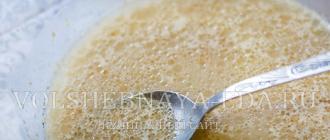Once the staircase steps are ready, installation can be carried out stair railings. If you didn’t have any problems installing the steps, then you will probably have questions when attaching the balustrade.
After all, installing it yourself is much more difficult:
- here you need to be especially precise;
- provide sufficient quantity attachment points;
- at the same time make everything invisible to the eye.
All parts must be pre-prepared: sanded, uneven surfaces filled with putty, and the surface varnished. All wall finishing work must already be completed, and if you plan to install a video camera on the staircase, a chandelier or other electrics, this must be done in advance.
Sanding can be done by hand or with a belt sander. Carved curved elements will need to be processed manually with sandpaper. Defects are repaired with a special wood putty. After it dries, you need to sand this area again.
Required Tools
To work you will need the following tools and materials:
- Drill;
- Drill guide;
- Milling machine;
- Hand grinder;
- Emery;
- Wood putty;
- Paintwork;
- Studs and spare parts bolts;
- Square and pencil;
- Next, you need to make even holes for fastenings in the balusters and posts, parallel to the direction of the parts. To make them even, you can gather homemade machine from a drill attached to a table. To center the drill, screw a block of oak or beech to the table and make a hole in it for the drill.
- Then screw on the baluster guide. Now you can make a hole in the balusters exactly along their axis.
Drilling holes

- To attach the handrails you need to cut out the bottom part milling machine grooves in the shape of an inverted letter “D”, as shown in the photo below. According to the size of this groove, you will need to cut a rail, which will then be screwed to the balusters. Another rail should be the size of the upper part of the groove, it is better to make it from beautiful material, since it will be visible.

- To install posts and balusters, we screw special pins with a diameter of 8 mm (for posts it is better to use 10 mm) and a length of 10 cm into their lower part.
Pay attention!
This fastening method is only suitable for hard wood.
To screw them in comfortably and not damage the threads, screw several nuts onto them, which you remove after screwing them in.

- Then a 7 mm hole is made in the tread of the bottom step of the stairs and a pole is screwed into it. After this, the post is removed from the pin, and it remains in the step.
- We fasten the step to the floor with an anchor bolt, which will then be hidden by a post.

- We make markings for the top post on the last step. You need to screw in the self-tapping screw exactly in the center and pull the thread between it and the pin. To ensure that all the supports stand in one row, use a square to mark a line on each step under the stretched thread.
- We mark the center for the baluster on each step and drill a small thin recess. Next, we put a drill guide on the drill and use a 5 mm drill to make holes for installing balusters.

- We screw the studs into the balusters and then screw them to the steps. Use a square to control the evenness and alignment of the installation. Before screwing them in, it is advisable to coat the installation surface on the tread with silicone in order to displace air and hold the parts together more tightly. Thus, we collect the entire march.

- If the installation of staircase balusters is not on the steps, and you want to make the same distance between them, 15 cm will be enough for thin parts, about 20 cm for thicker parts. If you have small children, then their fastening should be done so that the child couldn't fall between them. The height of the columns is chosen at your discretion, depending on your height. They are usually sold in 50 or 60 cm lengths.
Handrail attachment

- We cut the outer balusters at the required angle. We set them strictly vertically in level and glue an even strip onto the tape, which is needed to mark the rest. We make marks along the bottom line of the slats to cut all the balusters.
- We cut them and screw the cut out rail to it.

- We place the handrail on the rail and trim its edges at the desired angle for a tight fit with the posts. After this, we screw the handrail to the rail using self-tapping screws from below.
Advice!
To avoid chipping the ends of the parts when cutting with a miter saw, wrap them with tape.
Attaching the handrail to the pole

One of the options for screwing handrails to the outer posts is to use spare bolts special for mounting stair railings, the price of which is 100-300 rubles per piece. Sometimes you can’t do without them, especially if you need to connect the railing to a turn, as the video in this article shows.
Another option, more complex, that we will use is fastening with Euro screws.
- To do this, use a feather drill to make several recesses in the handrail from the bottom side. To avoid accidentally drilling through holes, place a metal sheet underneath.

- Use a chisel to remove the excess walls to create a rectangular recess with rounded corners. It should fit our Euro screw and hexagon.

- The edge of the handrail is trimmed and a stencil is made for drilling the hole. Using it, you need to mark the drilling point at the end of the handrail and use a thin drill to make a hole from the end to our recess. Then you need to widen it with a thicker drill.
- Attach the handrail to the post and trace its outline. Then apply the stencil and mark the position of the hole.
- We drill a hole, screw a Euro screw into it and then immediately unscrew it.
- We place the handrail on the rail and tighten it from below through the Euro hole made with a screw to the post.

- The lower posts can simply be screwed onto self-tapping screws or Euro screws at an angle.
Balustrade

After this, a partition can be installed on the landing.
- To do this, we screw in the post and additionally fix it to the wall with an anchor.
- We cut out and lay a lining between the pillars so that it is not directly to the floor and it is more beautiful.
- Intermediate balusters are screwed to this rail from the wrong side using Euro screws. The outer ones need to be attached to the floor through the lining with anchor bolts.
- Then the support rail is screwed on, and as described above, the handrail is screwed onto the screws from below.

The final touch
All that remains is to hide the traces of fastening. To do this, you need to cover the bottom groove with a decorative cover. We cut it to size and “sit” it on the glue to the handrail.
Until the glue dries, you can place the slats on the tape. If traces of the tape remain later, they can be wiped off with acetone, alcohol or white spirit.

Now let's decide how to arrange the space under the stairs. We decided to do this using clapboard cladding coated with oak colored impregnation and protective varnish. So that the space under the stairs is not empty, we make a door there, it will turn out to be a small pantry.

The lining is fastened to a frame made of 3*4 cm wooden blocks, which in turn are fixed to metal profiles.
Making the final mess: closing the joints decorative corner to match the color of the tree. We decorate the joint with the wall with a strip of the same color.

Conclusion
These instructions will allow you to make a fairly strong, solid fence that will not wobble when walking. A special installation for testing stairs can help you make sure of this. And the video in this article will answer the remaining questions, watch it!
Railings are an important part for ensuring safe movement on the stairs. The realities of today are such that there are many design solutions using new material properties. Sometimes such stairs, methods of fastening railings, design options side guards use components that operate at the limit of strength.

Accepted Standards
Relatively recently, there were clear requirements for the dimensions of stairs, the number and height of steps, the angle of inclination, as well as the design and number of railings. Fastening methods were clearly limited. They concerned balusters and “starting points” - the places where the railing or fence begins and ends. These are the requirements
- when there is a difference in height of a meter or more, fencing is required;

- the minimum height of railings and other fences is 90 cm;
- if the stairs are higher than 12 m above ground level, the height of the railings should be at least 110 cm;
- the distance between the posts of lattice fencing should not be more than 160 cm;
- the height of the first handrail should be 900 mm from the crest of the step;
- for additional safety of children, balusters should be located at a distance of no more than 120 mm if the staircase is located higher than one and a half meters from the floor;
- stairs must have a handrail on one side if their width reaches 125 cm;
- for larger widths – up to 2.5 m – it was necessary to install fences on both sides;
- all railings of one staircase must have the same slope;

- The minimum load requirement is 110 kgf/m. This is exactly the load the railings must withstand in the lateral direction.
There are also recognized standards for the installation of railing posts. The classic method is to make indentations for them, at least six centimeters deep. After installing the racks, the free space is filled with cement or concrete. To prevent loosening, a shoe made of cast iron, copper or steel is put on top. At the top of the racks, a mandatory strip of iron with a thickness of at least four millimeters was required. This tape was used to attach the railings to the balusters. The railing posts were required to be located at a distance of at least 60 mm from the edge of the stairs.

Today's fencing options
It is worth immediately noting that modern solutions without fencing, as in the photo above, or fencing with cables - complete irresponsibility and disregard for safety rules.
Otherwise, the generally accepted methods of attaching railings to the wall and to the floor have been preserved. However, new materials and design solutions make it possible to make three types of fastening:
- Vertical to the surface of the floor or stair step.
- On the side, at the end of the string of a staircase or balcony slab.
- On the other side of the slab or staircase element.

In terms of “interaction with the wall,” the mounting parameters have changed little. Used classic solutions– anchor bolts or welded connection with pre-installed support points. There is a technique when the elements on which the handrail is mounted are structurally a special part of the load-bearing elements of the walls. Also, the use of load-bearing points is implied in cases where it is necessary to attach the railings to the posts.
When it comes to cases where you need to attach a ready-made railing structure to the wall, use the following method. Power points are created in the places where the fittings are attached. Usually these are anchor bolts, securely embedded in the wall. In the recent past, cement was used for this. Today, polymer adhesives are widely used, which adhere well to surrounding material walls and firmly glue the anchor. Afterwards, a handrail with railings is mounted on the constructed power elements. The whole process of work in general outline can be seen in the video.
Most often, railings are required wooden stairs to the wall. This best option choice for a very simple reason - strength and wear resistance characteristics wooden structure usually much lower than the surrounding walls.

Attaching handrails to stairs and floors
Fastening the posts and balusters of the fence to the surface of the floor or stairs is a more complex issue.
The classic method is to act according to standards. In fact, today most solutions follow accepted requirements, for example, as in the photo. A recess is made in the surface into which the stand is installed. A shoe is put on top, which, in turn, is also securely attached to the surface. Additionally, it firmly fixes the rack, preventing scrolling or loosening.

The side fastening of the railing posts is fastening to the end of the stair string or the balcony slab. This method can be carried out using appropriate accessories. Usually this is a power block into which the stand is inserted and rigidly fixed. The fastener element that bears the entire load can be attached using anchor bolts or spacer tubes. An option is possible when it is simply welded to special zones made on the string of the stairs or removed from the slab.
The option of fastening on the other side of the bowstring works as a hybrid of the first two solutions. Rigid fixation of the rack and at the same time the power element of the fastener are required. In this case, two methods are usually used.
- In a slab or stair element it is done through hole. The entire block that secures the stand is located on the reverse side.
- The recess for installing the stand is blind. However, there is a hole for the passage of a bolt, one or more, which connects the bottom of the rack and the power element located on the other side.
Before installing a wall handrail, decide on several parameters that will help you choose fittings. Here are the questions to answer:
- Where do you install the handrail?
- What material did you choose?
Depending on where you will install the railings to the wall, choose the material: wood, steel, stainless steel, PVC, aluminum. When you select a handrail, carefully study the characteristics, taking into account where and where you are installing the wall: under a canopy, in a basement, on a porch, in a dry or wet room.
For example, a tree is installed on the street and at home, but due to external influences environment dry out, crack and require additional care.
The following handrail shapes are available on the market: round, square, shaped or oval, which are used to match the brackets to the wall. The selected wooden handrail has a straight backing, so a flat tray or a diameter of 50.8 mm is suitable here. After installation, a gap of 1-2 mm will not be visible from below. For a neat and strong installation, grooves 2-3 mm deep are made into which the holder cradle is fixed.
If you choose metal handrails, the wall bracket is selected exactly according to its shape and diameter. It is impossible to remove the gaps between the cradle and the handrail. The parts are secured with screws or blind rivets, or argon-arc welding.
Classification of railing brackets
Brackets for railings, otherwise called holders, fastenings to the wall. The cheapest stainless steel brackets are welded. Many people are not confident that they will be able to correctly install handrails with such fastenings. Simply attach the holders to the handrail and mount the handrail to the wall at an angle of 900 mm. The advantage of such brackets is their rigid design. Of course, it is more convenient to buy ready-made metal handrails.
Based on the type of installation, fastenings are divided into welded and prefabricated. Negative point prefabricated brackets: check and tighten connections every 6 months.
Holders are divided according to the method of installation to a wall with flanges, under a stud. A strong connection is on the flange. The load is distributed over three attachment points. When attaching to a stud, it is necessary to additionally use chemical anchors and plastic sleeves.
Where to buy holders for wall handrails?
Holders for handrails to the wall made of stainless steel are sold on the construction market and in specialized online stores. Our website presents proven wall mounts. The main thing when selecting a bracket is that the mount fits your design and at the same time creates a rigid structure.
You can order or buy a stainless steel handrail bracket with delivery or pickup. To do this, fill out an application through the online store or call by phone. If you need a set for handrails, we will help you choose the right option for the size and design of the stairs.
One of the main components of the staircase design is its railing. It carries out a protective and decorative task and consists of balusters, main intermediate and support posts, handrails, as well as protection screens. Railings help a person move safely along the flight of stairs. They provide support while walking and prevent falls over the perimeter of the stairs. The article discusses methods for installing stair elements, as well as attaching the handrail to the wall.

Balusters are the most important component of stair railings
To correctly install a fence, you need to know how to attach railings and balusters based on their type and material of production.
Balusters are supports that are located vertically. It is on them that the handrail is laid. They are placed directly on the steps or mounted to stringers or bowstrings. The configuration of the balusters can be different and is determined by the interior design of the building, the design features of the staircase, the style decision, and, of course, the price. They can decorate even a very plain flight of stairs. Balusters are made from materials such as wood, steel, concrete, stone, glass, and plaster.
Today you can often see stair railings that contain two or three types of building materials that are ideally combined with each other. The method of installing the baluster to the span depends on the material, namely which option is best to choose.

Necessary Requirements
In order for the staircase railing to be reliable and safe, a number of mandatory conditions must be observed during its installation:
- the clear distance between the balusters should be at least 150 millimeters;
- the safe height of the railings must be at least 900 millimeters;
- fasteners for handrails must be made at 2 points - to the handrails and the staircase structure (steps, stringers, bowstrings);
- fastening the handrail to the wall should be extremely smooth and comfortable, but not slipping; next to the wall they can be fixed directly to it without installing balusters.

The main protective task of the railing is performed by the support posts - upper and lower, therefore their fixation must be approached very responsibly. Although the installation of intermediate balusters must also be treated carefully. The fence needs to be able to support a hundred-kilogram person leaning on it.
The entire installation of railings consists of the following stages:
- the outer support pillars are mounted from below and above;
- the locations of the baluster structures are marked - for this you can use a thin but durable cord or a laser level; It is important to remember that precise markup parameters are very important and allow you to avoid unnecessary problems;
- Center lines are drawn in the center of the balusters using a marker or pencil;
- The upper baluster ends are prepared. They need to be sawed off according to the slope of the staircase. Sawing the ends from below is carried out only in the case when the vertical supporting elements are placed on top of the bowstring or the fasteners for the railing have a custom design.
Wooden stair railing
The main load-bearing components of the fences can be secured to the steps with simple nails, but such a device will quickly become loose and after a short period of time will become unusable.
There are three main methods that allow you to make the fasteners for railings stronger; handrails to baluster structures are installed in a similar way. Fastenings are made using dowels, self-tapping screws, and studs. When the railing is installed on steel studs, a hole no more than 80 millimeters deep is drilled in the middle of the bottom end of the wooden baluster structure. Its diameter is usually 12 millimeters.

It is important to consider that the studs must be galvanized to avoid corrosion. The pin is inserted into the hole so that it protrudes beyond the coating by 5 - 7 centimeters. Thanks to a special glue, they are fixed in the required position and wait for its final setting. Then a hole is drilled in the string or steps and the balusters are “seated” into place using the same glue and pins that are installed in the balusters.
Installing balusters on dowels, which are rounded wooden tenons, is done as follows:
- in the baluster ends from below and on the bowstring or steps, larger holes are drilled than for metal pins;
- dowels are inserted into the prepared grooves, using glue that is identical to PVA for fastening;
- a baluster is installed on the dowels, first filling the finished holes with glue;
- the verticality of the pillars is checked using a level or plumb line and left for 2 - 3 hours until the glue has completely hardened;
- begin installation (in particular, attaching the handrail to the wall).
If you are interested in this article or have something to add, you can leave your comments on it.
Railings not only decorate the stairs and, possibly, the entire room, they also have at least one more important function, this is safety.
The main task of the handrail is to ensure safe movement along the stairs and prevent falls.
The fastening of the railings must be reliable and withstand the necessary loads.
Requirements for railings
It is important to make the railings durable and easy to use. Their main tasks are to increase the safety of the stairs and strengthen them.
When installing railings, it is necessary to take into account the requirements that are accepted by general standards and regulatory documents:
- Handrails must be installed if there are more than two steps on the stairs.
- The minimum height of the railings, adopted by Russian standards, should not be lower than 90 cm, optimal height 90-120 cm depending on the installation location. If the stairs are used by children, it is recommended to install additional handrails at a height half of the main one.
- The design of the fence must be made in such a way that the child’s head does not pass through it. For example, the distance between balusters should not be more than 15 cm; in the case of forged railings, it is necessary to think through the pattern in such a way as to fulfill this requirement.
- The fastening of balusters or other type of fencing should be carried out at the top and bottom of the railing.
- The railings must withstand a lateral load of at least 100 kg.
- If the flight width is small, up to 120 cm, and the staircase is located along the wall, it is permissible to install railings on one side. When increasing the width of the flight, it is necessary to additionally attach the railing to the wall. If the staircase is not located near a wall, railings are installed on both sides for any width of the staircase, with the exception of unique design solutions.
Selection of materials
The railings must be beautiful appearance and fit into the overall interior of the room. They can be made from a wide variety of materials and their combinations.
- . They are mainly used for internal stairs, much less often for outdoor ones. The reason for this is the fact that this material wears out quickly and loses its attractive appearance under the influence of temperature and sun.
- . Their use is much wider due to the fact that the metal is much more resistant to external factors. Metal railings, in turn, are distinguished by the type of metal, the most common being from.
- Plastic railings. Analogue of almost any material. Modern technologies production allows you to obtain the appearance and texture of any type of wood or stone. The advantage is resistance to rotting and corrosion.
Do-it-yourself installation of balusters and railings
Before we begin installing the railings, let's decide on their elements.

Railings include:
- support posts - installed at the beginning and end of the march;
- handrail;
- fencing (balusters, artistic forging, etc.).
Installation of railings must begin with the installation of support posts:
After the support pillars are installed, it is necessary to install balusters without fastening and attach a handrail. This is done to make it more convenient to mark at what angle the cut needs to be made on each baluster.
After making the cut, onto the string or steps. The handrail is attached to the balusters using a dowel or self-tapping screws.
Fasteners for railings to a support post:






